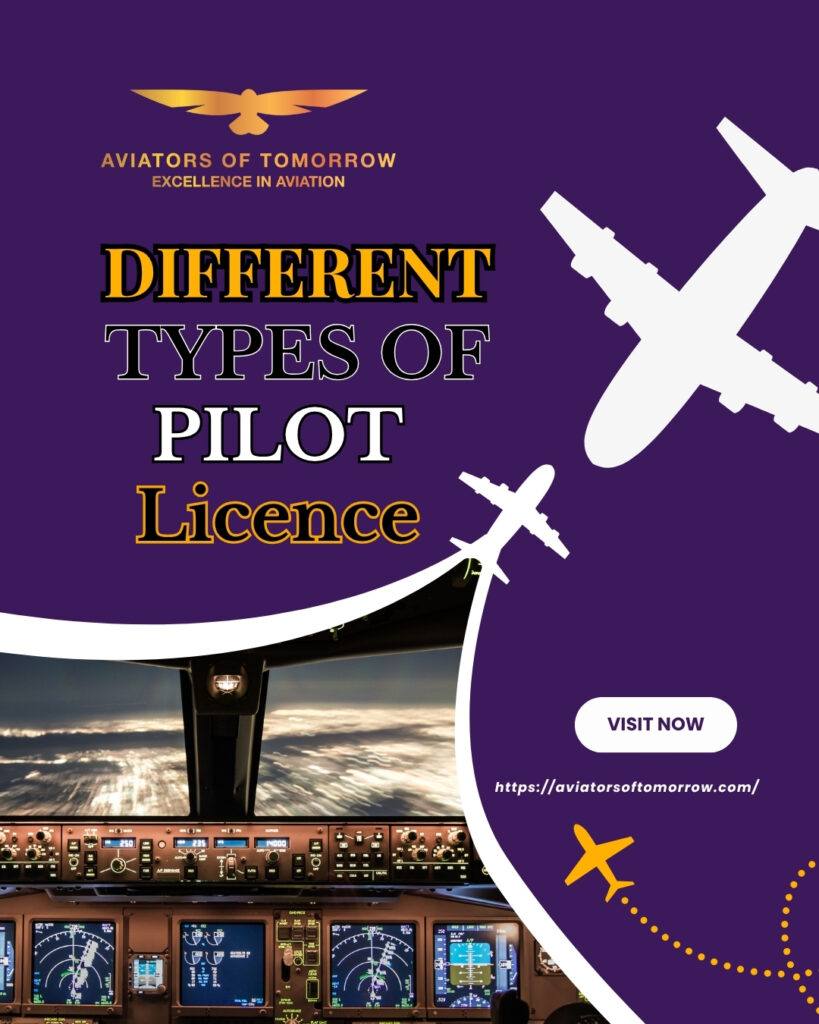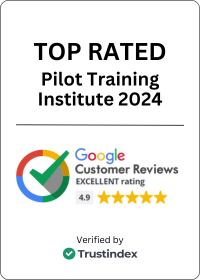Becoming a pilot is a dream for many who love the skies. However, achieving this dream requires more than passion. You must hold the right pilot licence to fly legally. Every licence comes with its own eligibility, privileges, and responsibilities. Whether you want to fly for fun, become a flight instructor, or command a commercial jet, understanding the types of licences is essential.
In this article, we’ll explore the major types of pilot licence, their training requirements, privileges, and career opportunities.
Table of Contents

What is a Pilot Licence?
A pilot licence is an official authorization issued by aviation authorities. It proves that a pilot has met all the medical, theoretical, and practical flying standards required for safety. The licence also defines what kind of aircraft you are permitted to fly and under what conditions.
For example, a student licence only allows supervised training, while a commercial licence allows you to earn money as a pilot. The higher you progress, the more responsibilities and privileges you gain.
1. Student Pilot Licence (SPL)
The student pilot licence is the very first step into aviation. It allows students to begin training with an instructor. With this licence, you cannot carry passengers or fly for recreation, but you can practice essential flying skills.
This licence typically requires candidates to be at least 16 or 17 years old and hold a basic medical certificate. Once obtained, you can log flying hours that count toward higher licences like the PPL or CPL.
The SPL is like your learner’s permit in driving it’s a stepping stone, not a final destination.
2. Private Pilot Licence (PPL)
The private pilot licence is designed for aviation enthusiasts who want to fly for leisure or personal travel. It allows you to operate light aircraft and carry passengers, but strictly prohibits earning money through flying.
Training for a PPL usually requires 40 to 60 hours of flight time, including solo flights, cross-country navigation, and night flying. The training also covers theoretical knowledge, including meteorology, aviation law, and flight planning.
Owning a PPL gives you the freedom to explore the skies, plan weekend trips, or even rent small aircraft for holidays. However, it is not sufficient for commercial careers.
3. Commercial Pilot Licence (CPL)
A commercial pilot licence is essential if you wish to turn flying into a profession. With a CPL, you can be paid for flying aircraft, making it the gateway to the aviation industry.
Obtaining a CPL usually requires 200 to 250 hours of flying experience. Training is rigorous, covering advanced navigation, instrument flying, and emergency handling. Candidates also undergo written and practical exams to test their technical and operational skills.
Once qualified, CPL holders can work for charter companies, cargo flights, flight schools, or regional airlines. It is a rewarding licence for those who dream of turning passion into a career.
4. Airline Transport Pilot Licence (ATPL)
The airline transport pilot licence is the highest qualification in civil aviation. It allows you to serve as the captain of commercial airlines.
This licence demands more than 1,500 hours of flying in most countries, along with mastery in advanced flight operations. Training involves handling multi-crew aircraft, managing emergencies, and demonstrating leadership in the cockpit.
Pilots with an ATPL carry immense responsibility, transporting hundreds of passengers across continents. It represents the peak of professionalism in aviation and is the ultimate goal for many aspiring pilots.
5. Multi-Crew Pilot Licence (MPL)
The multi-crew pilot licence is a relatively modern addition to the aviation world. It was designed to meet the needs of airlines by focusing on training pilots specifically for multi-crew operations.
Unlike traditional licences, MPL training places heavy emphasis on simulators, teamwork, and airline-specific procedures. The training is often conducted in partnership with airlines, and candidates are prepared for roles as first officers on commercial jets.
This licence has become increasingly popular as airlines prefer candidates trained directly for airline environments. However, its flexibility outside airline roles is limited compared to a CPL or ATPL.
6. Sport Pilot Licence
The sport pilot licence caters to aviation enthusiasts who want a simpler and more affordable way to enjoy flying. It is limited to light-sport aircraft, which are smaller and less complex than traditional training aircraft.
The licence typically requires just 20 to 25 hours of flying, making it quicker and cheaper to obtain. However, the privileges are restricted—you cannot fly at night, carry many passengers, or operate larger aircraft.
It is perfect for hobby flyers who want to enjoy the thrill of flying without investing in extensive training.
7. Recreational Pilot Licence (RPL)
The recreational pilot licence is a middle ground between the student licence and the private licence. It allows you to fly light aircraft with some passengers, but with restrictions on distance and aircraft size.
Training requirements are lower than for a PPL, often around 30 flight hours. While it is more limited, it is cost-effective for those who want to fly within a local or regional area without pursuing full commercial privileges.
8. Flight Instructor Licence (FI)
The flight instructor licence is for pilots who wish to teach others. It allows you to train students, guide them through flight hours, and prepare them for check rides.
Becoming an instructor requires holding a CPL or higher, along with additional training focused on teaching methods and safety procedures. Many professional pilots start as instructors to gain experience and build flying hours.
It is both a career path and a stepping stone toward advanced licences like ATPL.
9. Helicopter Aviation Licence
Flying a helicopter requires a completely different skill set from fixed-wing aircraft. The helicopter aviation licence allows you to operate rotary-wing aircraft for personal or commercial use.
Training includes vertical take-offs, hovering, and advanced maneuvers unique to helicopters. The demand for helicopter pilots is high in fields like medical evacuation, tourism, aerial surveys, and defense operations.
This licence offers adventurous and highly specialized career opportunities for those who want something beyond traditional aviation.
Conclusion: Choosing the Right Aviation Licence
The aviation industry offers many pathways, each beginning with a specific aviation licence. Your choice depends on your long-term goals. If your dream is to fly casually, licences like the PPL, RPL, or sport aviation licence are suitable. For those pursuing aviation as a career, the CPL and ATPL are essential. If you are passionate about teaching, the flight instructor licence is a rewarding option.
Every journey begins with the student aviation licence, which opens the door to further training. As you progress, each licence builds on your skills, responsibilities, and opportunities. Whether flying for leisure or commanding an international flight, the right licence transforms your passion into reality.
An aviation licence is not just a piece of paper. It is your passport to the skies, your license to explore, and your key to building a lifelong aviation career.

